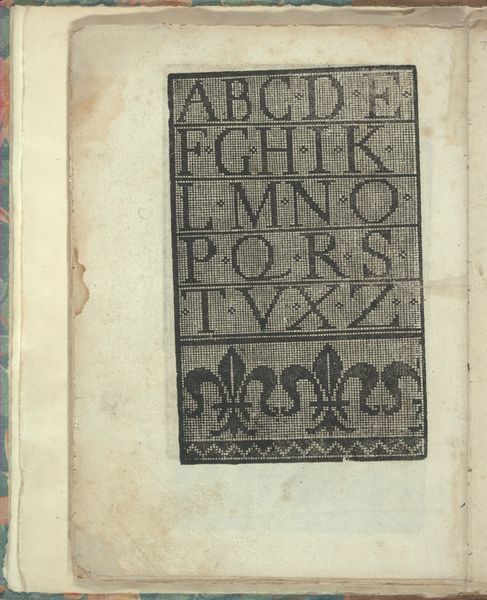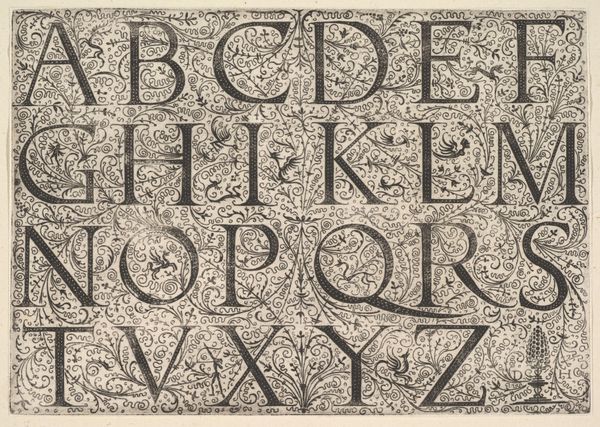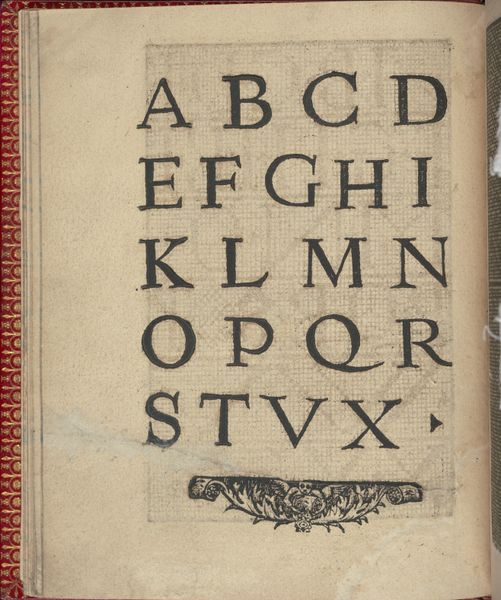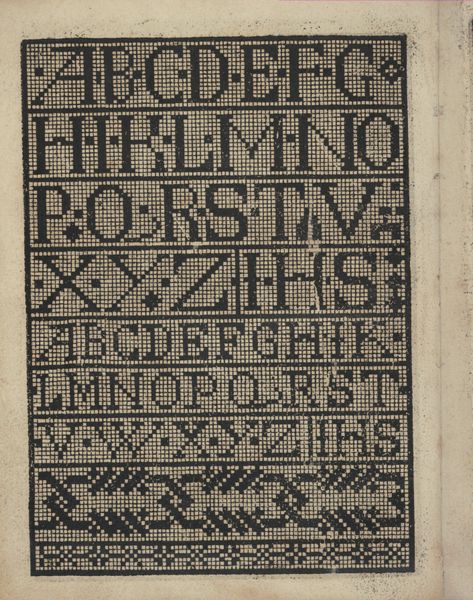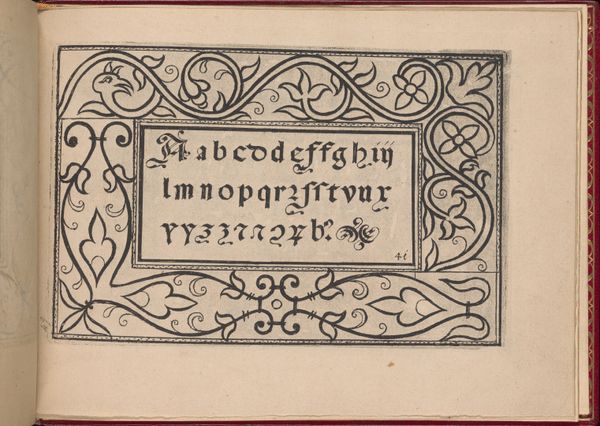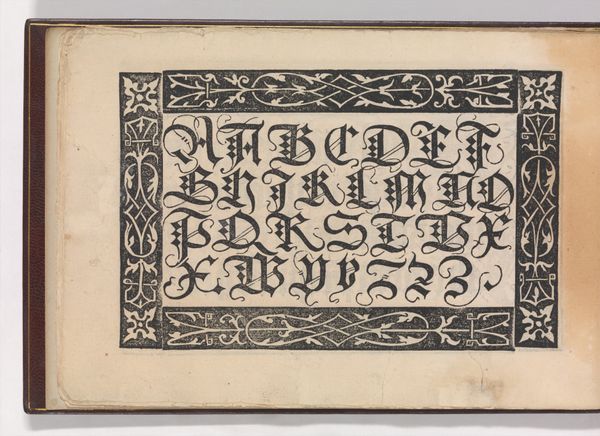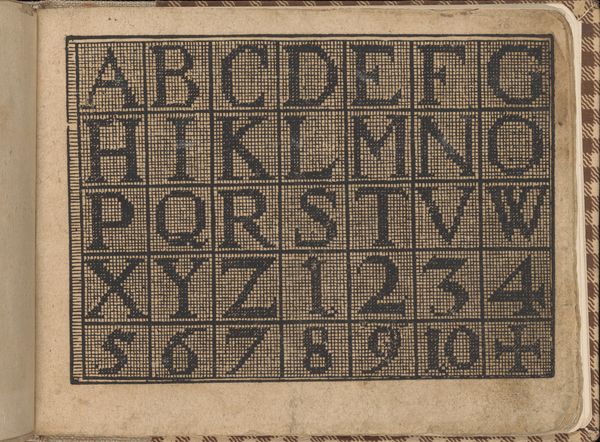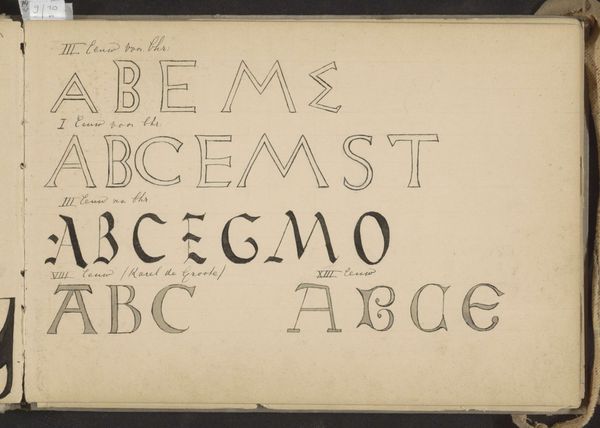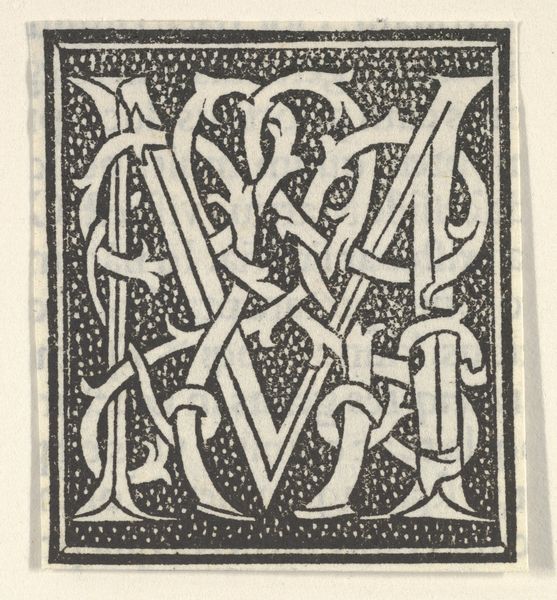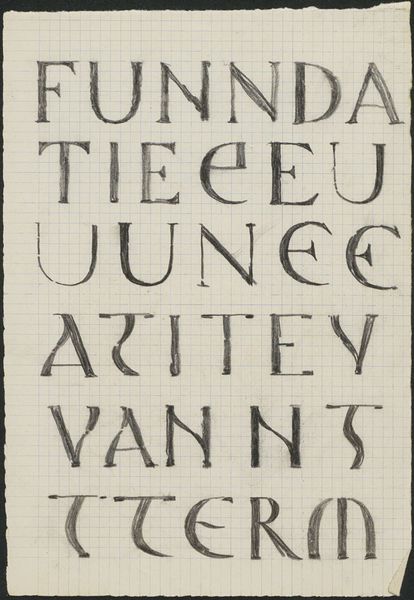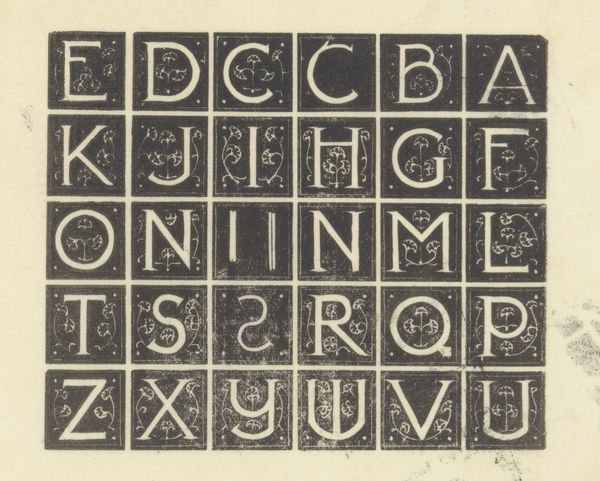
drawing, print, engraving
#
drawing
# print
#
figuration
#
11_renaissance
#
northern-renaissance
#
engraving
Dimensions: sheet (trimmed to plate mark): 7.5 × 12.5 cm (2 15/16 × 4 15/16 in.)
Copyright: National Gallery of Art: CC0 1.0
Heinrich Aldegrever created this engraving of the alphabet on a metal plate sometime in the first half of the 16th century. The alphabet is presented in upper-case letters inside a frame with foliate elements, while on either side are playful putti. Aldegrever was a printmaker working in Germany during the Reformation. While he produced some images that supported the new Protestant faith, he was also an ornamental designer for a variety of luxury goods. Like other so-called "Little Masters," Aldegrever made small prints for collectors, that served as models for artisans. The alphabet was becoming increasingly important at this time, because of the spread of printing, the emergence of vernacular languages, and rising literacy rates. This print suggests that even something as practical as the alphabet could be made into a work of art. By studying Aldegrever’s prints alongside other decorative objects from the period, we can better understand the culture of the early modern period.
Comments
No comments
Be the first to comment and join the conversation on the ultimate creative platform.
